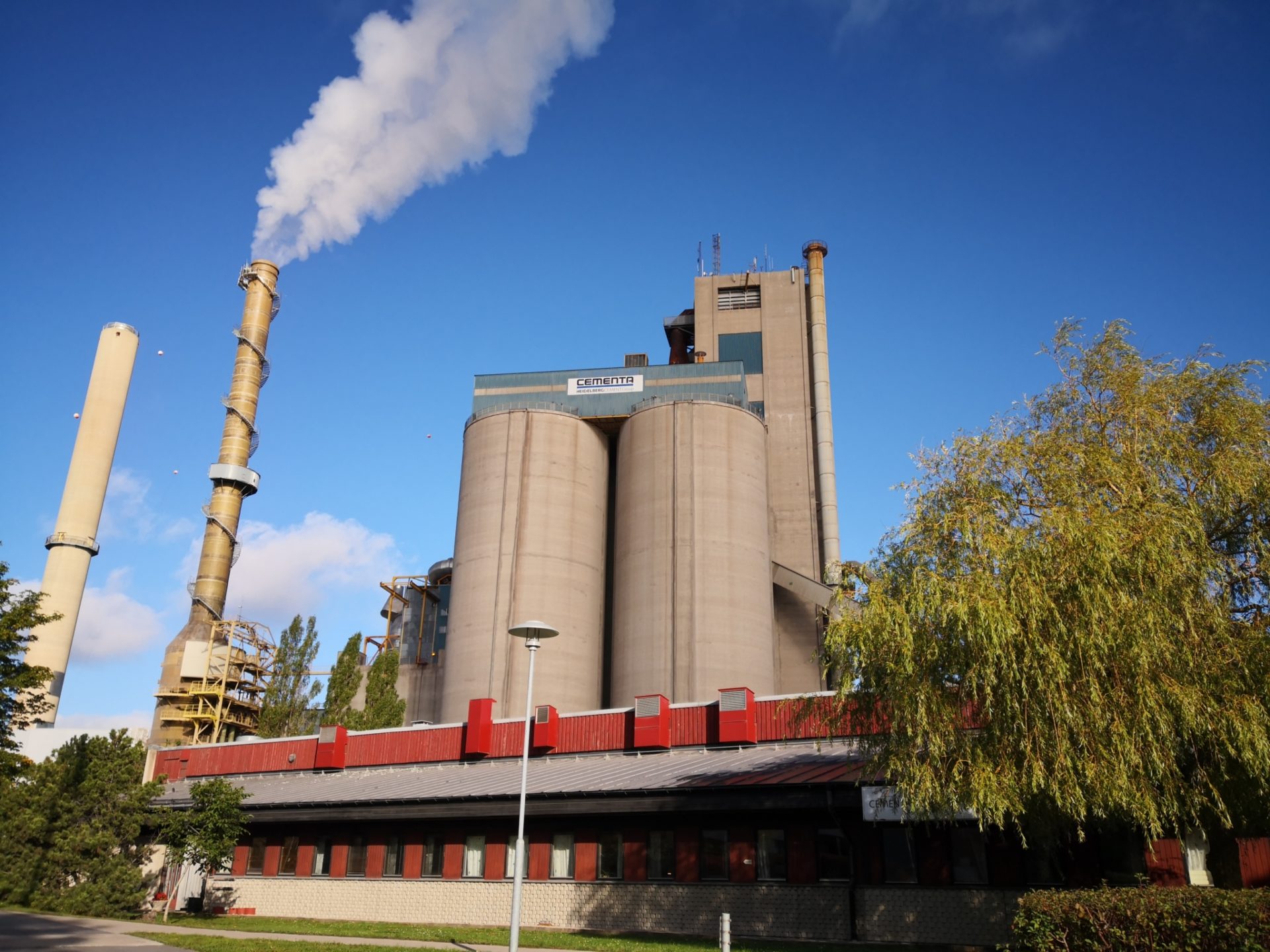
A field excursion to the cement factory in Slite, Gotland
When in Gotland, it is hard not to talk about limestone and the local Cementa factory. The factory was originally built 100 years ago in 1919 and now employs around 230 in Slite. The SEABASED project team and steering group visited the factory to learn more not only about the making of Cementa’s products but also about the sorbent, that is used in our pilot, which is treated in this factory. This sorbent is produced from marl and is used to bind phosphorus to the sediment in pilot sites in Sweden and Finland.
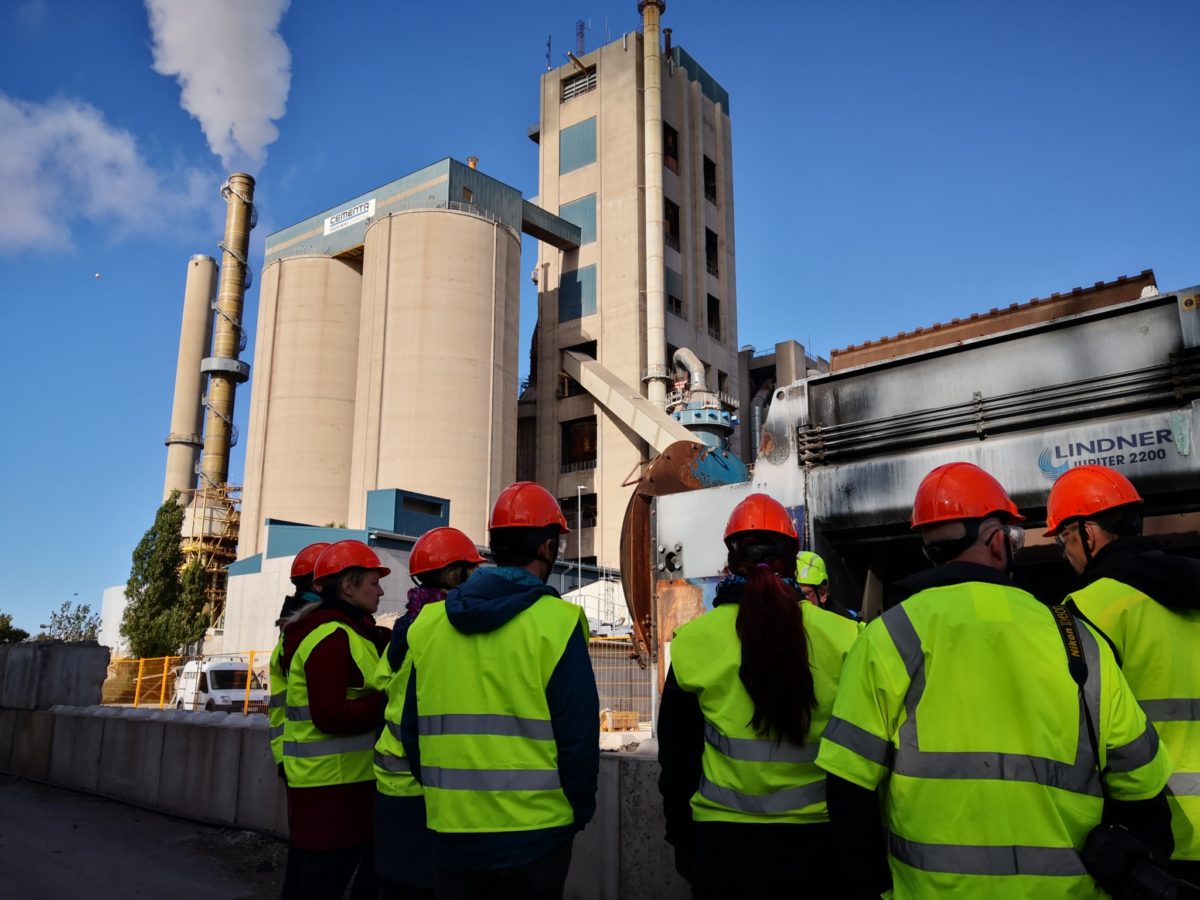
The SEABASED team and steering group visited the Cementa factory in Slite.
Aiming for a zero CO2 emission product
First, we learned the basic facts about the company. The former Laboratory Manager Johan Larssson, told us that they produce 2.8 million tons of cement each year. They also produce ballast and concrete. A production of this scale does not come without cost. Unfortunately, the cement production in the world accounts for 8 % of the CO2 emissions. However, Cementa’s vision is that there will be zero CO2 emissions during the product lifetime by 2030. Right now, they are using so called alternative fuels to make the products. About 55-60% of the used fuel is from alternative sources such as pelletized wood, paper, plastics and textiles, waste solvents and tires etc. This leads to a reduction of 200 000 tons of CO2 emissions yearly.
There is still more work to be done to achieve the 25-30% reduction in CO2 emissions so that Cementa’s vision of a zero emission product could be fulfilled. To catch carbon dioxide from the chimneys, some CCS/CSV- techniques will be tested. The aim is to transform the carbon into liquid form and transport it into oil fills.
After hearing the facts, we got to see Cementa’s laboratory, where the ingredients as well as the final products are tested to ensure quality. Many kinds of tests in different kind of settings need to be done, before the final product is sent to customers.
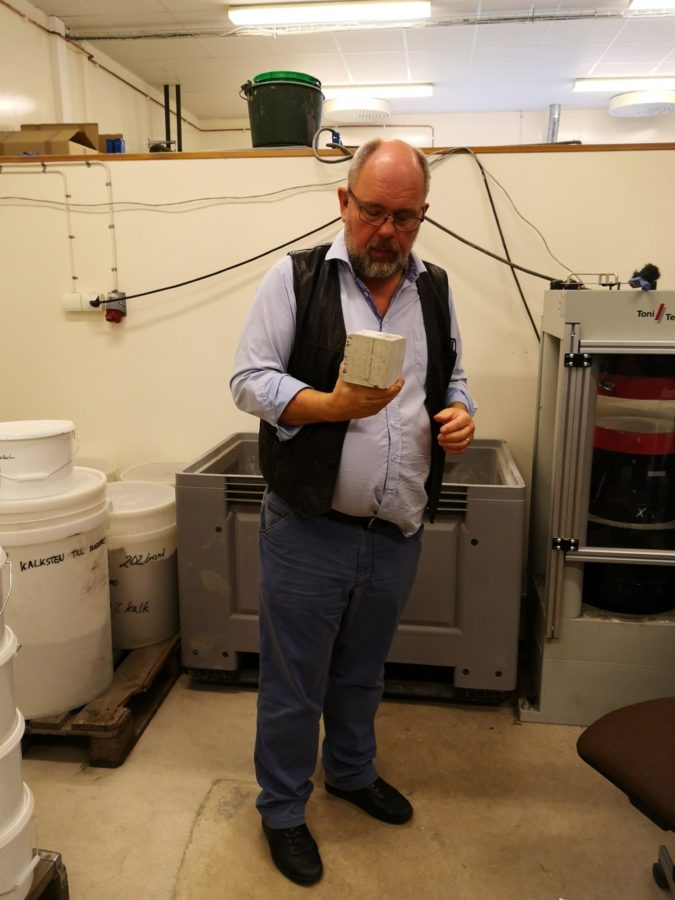
The former Laboratory Manager of the Cementa factory in Slite, Johan Larsson told us how crucial testing the materials and end products are.
Testing and treating the marl used in SEABASED pilots
The sorbent we use in our pilots is produced from marl and has been tested thoroughly beforehand in Cementa’s laboratory in cooperation with Eva Björkman and Sven Blomqvist from Stockholm University. It is crucial to know how the marl reacts to seawater and if the binding quality withstands time. Also, the amount and particle size of the marl used in our pilot was tested here.
We also saw the custom-built oven that produces the sorbent in action. The feed to the oven is about 2 kilograms of marl per minute. It was fascinating to see the rotating tube of extreme heat. During the next year these sorbent particles will hopefully bind phosphorus to the sea floor, reduce internal loading and help the Baltic Sea to recover!
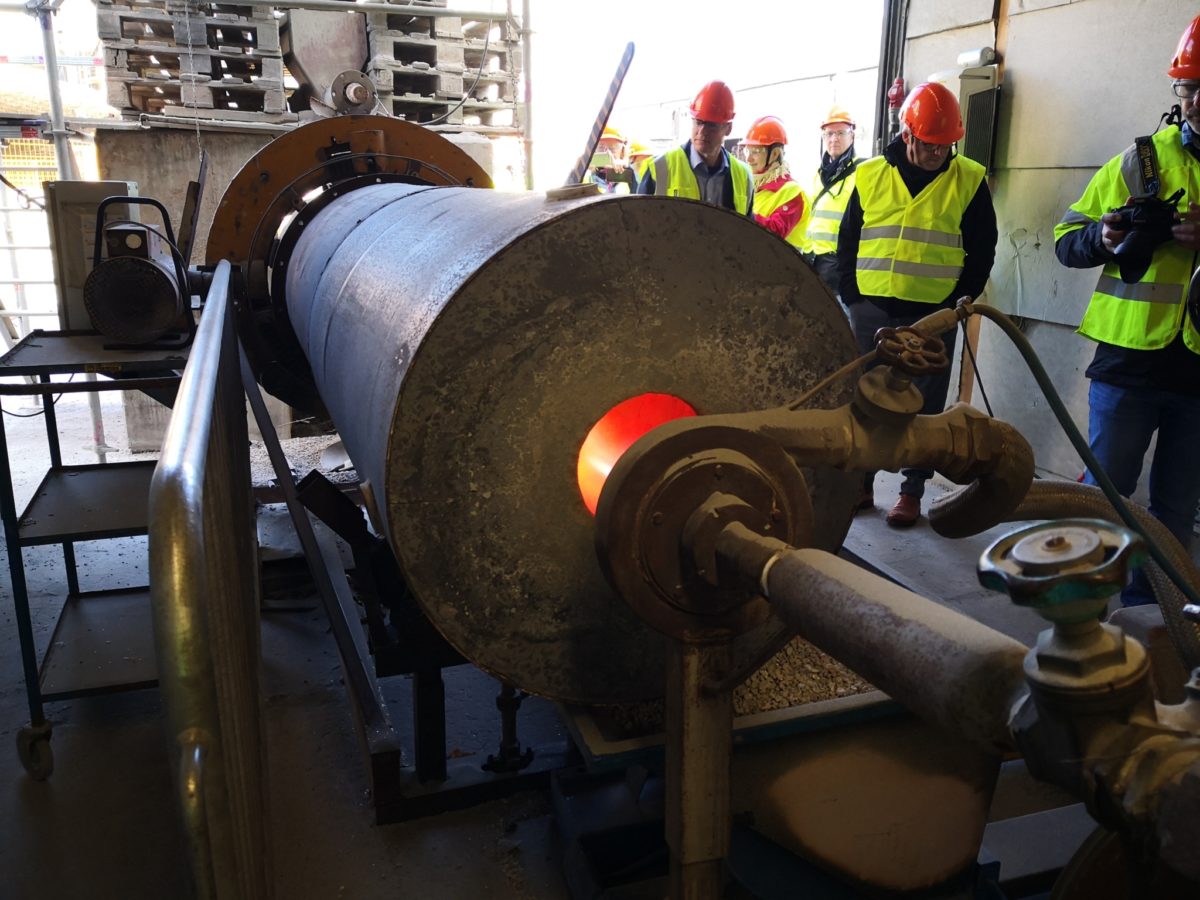
This furnace is used to treat the marl that will be spread in our pilot sites.
Lastly, we had the opportunity to visit the roof of the silos, which is the highest point in Gotland, reaching the height of 105 meters. We saw a lovely view of the surrounding area. We wish to thank Johan and Tina Hjellström from Cementa for hosting us and for all the good cooperation we have had so far in this project.
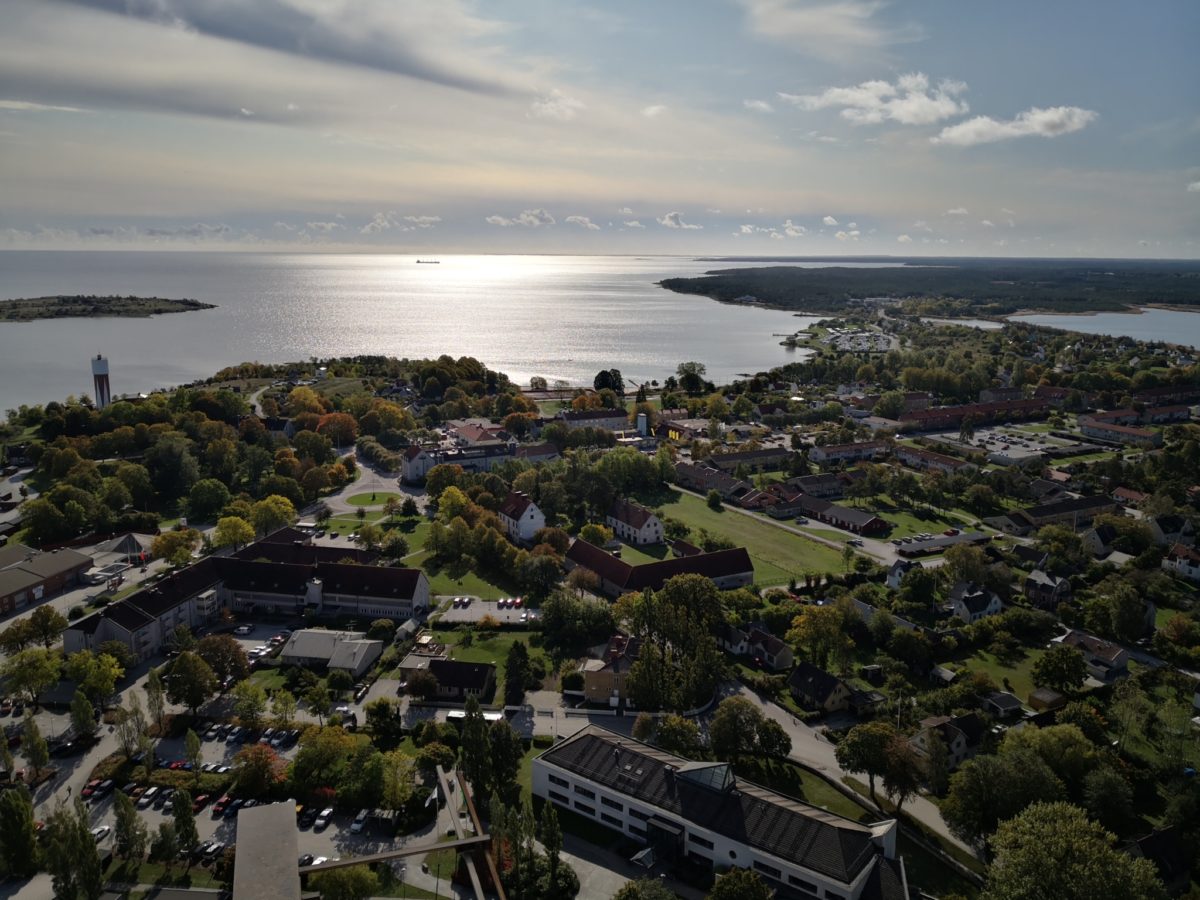
A wonderful view to Slite and the Baltic Sea from the top of the silos.


